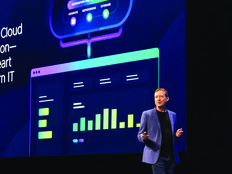Rearchitecting Apps for the Cloud Isn’t Easy
The government’s recent push to boost its efficiency is forcing agencies to come to grips with the financial realities of delivering any IT service, but upgrading legacy applications to better align with a consumption-based cloud model remains a particular challenge.
Understandably, agencies don’t always want to unwind a decade-old app that’s been touched by more than 50 developers during that time, especially when it’s running as it should and delivering value. Rearchitecting that app for the cloud might first require poring over old, inaccurate documentation; understanding the coding practices that produced its scripts, components and infrastructure; and interviewing former business stakeholders.
Depending on the size, complexity and maturity of the agency’s IT team, rearchitecting can also be incredibly time-consuming, and it won’t immediately produce a vastly different outcome. That’s why plenty of agencies prefer to focus on new features and functionality instead.
What rearchitecting will do is pull agencies out of technical debt, and artificial intelligence is helping analyze legacy apps. CDW Government uses its Strategic Application Modernization Assessment and other tools leveraging advanced features to assess code maturity and determine how long it will take to redesign the architecture. This speeds up an agency’s cloud migration.
DISCOVER: CIO Beth Killoran weighs in on GAO’s cloud migration.
Pay-as-You-Go Isn’t Enough for Successful IT Outcomes
As a technology-based company, CDW Government’s focus has historically been outcomes versus a business model of billable resources, from its work with the Bureau of Labor Statistics to its work with Login.gov. Solutions are designed to be handed over to the agency, and, unless we’re asked to stay for a set time frame, we’re prepared to transition to developing new feature sets.
To drive successful outcomes with a pay-as-you-go model, agencies must clearly define success metrics tied to their investments. If 33% of a budget is allocated to a specific effort, there should be a clear line of sight into how that funding translates into 33% progress toward delivery.
Despite their hunger for efficiency, not enough agencies are trying to apply pay-as-you-go strategies to as much of their IT budgets as possible. Obviously, some IT functions must survive beyond a project or funding year, but agencies should acknowledge why they’re being funded in the long term.
True efficiency lies with a consumption-based model.
This article is part of FedTech’s CapITal blog series.













